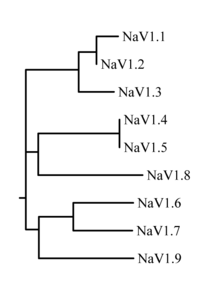Counteracting the progressive neurological disability caused by neuronal and axonal loss is the major unmet clinical need in multiple sclerosis therapy. However, the mechanisms underlying irreversible neuroaxonal degeneration in multiple sclerosis and its animal model experimental autoimmune encephalomyelitis (EAE) are not well understood. A long-standing hypothesis holds that the distribution of voltage-gated sodium channels along demyelinated axons contributes to neurodegeneration by increasing neuroaxonal sodium influx and energy demand during CNS inflammation. Here, we tested this hypothesis in vivo by inserting a human gain-of-function mutation in the mouse NaV1.2-encoding gene Scn2a that is known to increase NaV1.2-mediated persistent sodium currents. In mutant mice, CNS inflammation during EAE leads to elevated neuroaxonal degeneration and increased disability and lethality compared with wild-type littermate controls. Importantly, immune cell infiltrates were not different between mutant EAE mice and wild-type EAE mice. Thus, this study shows that increased neuronal NaV1.2 activity exacerbates inflammation-induced neurodegeneration irrespective of immune cell alterations and identifies NaV1.2 as a promising neuroprotective drug target in multiple sclerosis.
There are nine types of voltage dependent sodium channels. Nav1.6 is a common sodium channel at the node of ranvier which is were there is a gap between the myelin shealths. However during demyelination the sodium channels have to re-distribute along the new to maintain nerve conduction and Nav1.2 becomes expressed. In this study they expressed Nav1.2 into nerves and when there was the an inflammatory attact there was more damage from the inflammatory penumbra and this caused nerve damage.
Therefore sodium channel blockers show offer neuroprotection from the inflammatory penumbra and this is indeed what we showed during optic neuritis and are now attempting to do with PROXIMUS. This has recruited very slowly but we are attempting to determine if this approach works in MS and we are adding a nerve protecting sodium channel blocker on top of a DMT
